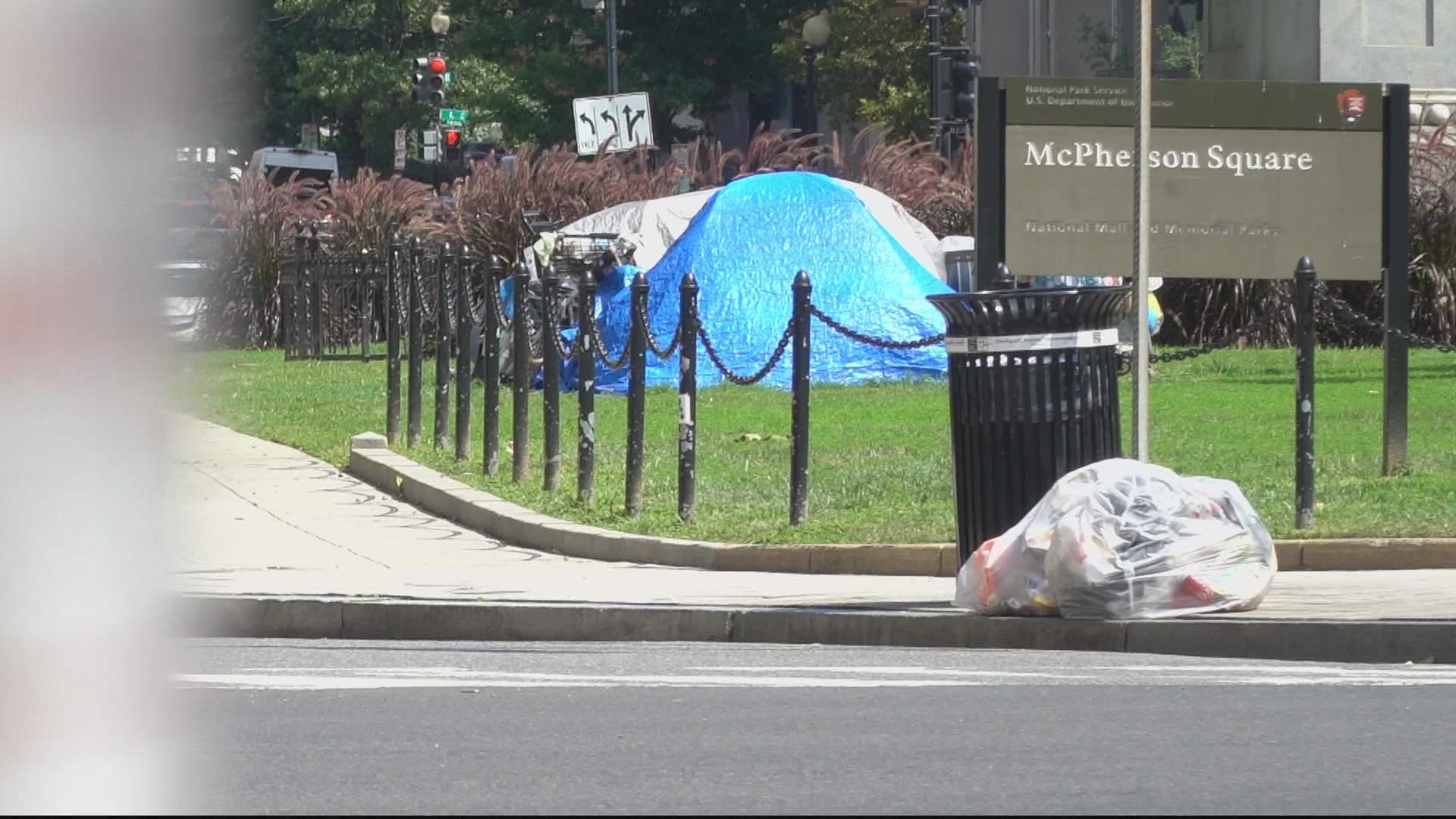WASHINGTON — The District saw a 40% spike in the number of homeless encampments across the city during the pandemic, but only a 5% increase in the number of people experiencing homelessness. That’s because some unsheltered residents set up multiple tents as the city relaxed its enforcement of laws banning encampments during COVID, according to Wayne Turnage, deputy mayor for the District of Columbia Health and Human Services.
“As long as there are people living on the street, you have to conclude that, you know, we need to do more,” Turnage said.
William Everett has been living in a tent in McPherson Square for the past 10 months, which he says is better than sleeping in a shelter.
“There’s too much going on," Everett said of why he doesn't like shelters. "They come to check certain things. They check if you got a knife, gun, bottle of liquor, but they don’t drug test.”

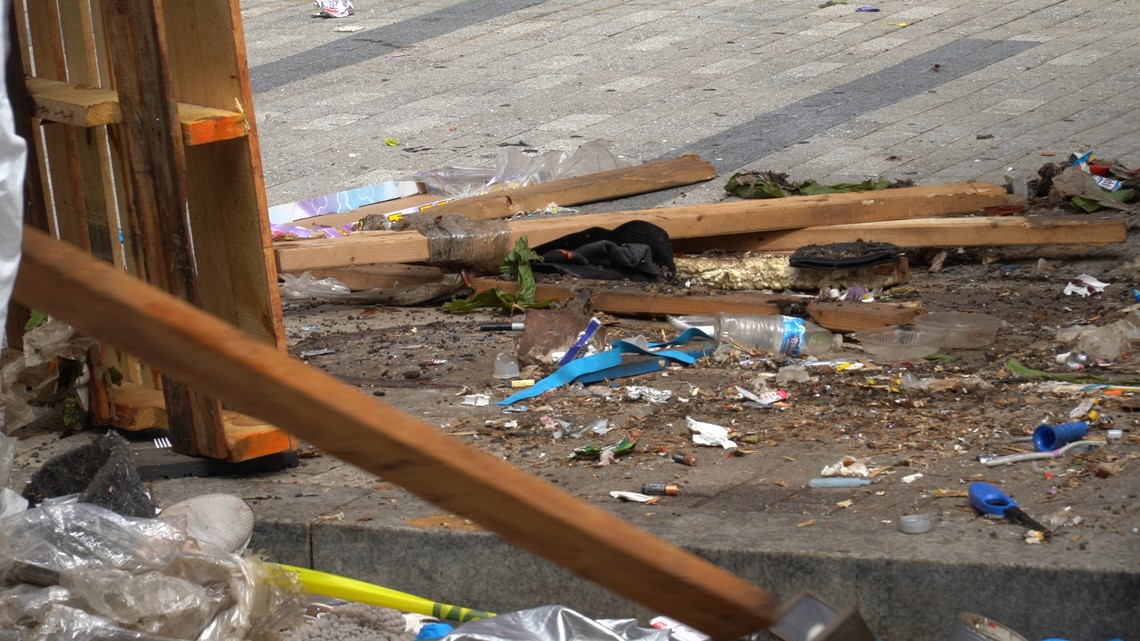
Over in Shaw, neighbors and businesses say they are sympathetic, but they are reaching a breaking point. Eliza Figuero, who owns a commercial cleaning business on T Street with her business partner Ana Chicas, said there are now multiple homeless encampments outside her business.
“It’s just a difficult situation, and very sad to see,” Figuero said.
Chicas said her 2-year-old child commonly has to step over drug paraphernalia and needles to enter her building, while Figuero said the sheer number of people coming and going is her main issue.
“The people traffic, seeing people high on a substance because they are out of their element,” she said.
The D.C. government is now cleaning up the T Street encampment after months of calls and complaints and a wave of crimes, including thefts, a homicide and a growing public health and rodent problem. WUSA9 watched one morning as city workers pulled up pallets unsheltered people were using as a base in their encampment, only to see seven rats scurry out.
“And they are all going to our property,” Figuero said, shielding her eyes as roaches scattered.
But what lies underneath is more than rats and roaches. It's real lives.
“How do we hold the government accountable when it comes to homeless people? What do they have in place for them?” said one woman on the street who watched as they city cleared the T Street encampment. She did not offer her name to our reporter.
Turnage said under his supervision, D.C. does operate an encampment program monitoring the city’s encampments for people experiencing homelessness. Turnage said the city only moves to shut them down if they’re blocking the use of public space, like one the District just cleared in Foggy Bottom, or when the encampment threatens public health or safety, like two rat-infested encampments occupying National Park Service land across from the Convention Center.
NPS Spokesperson Mike Litterst said in the 60-day period leading up to the closure, there had been 25 arrests in the two encampments and police had seized over $12,000 of narcotics.
“There was a handgun that was found in the park and two of the residents had been involved in stabbings,” Litterst said. “So clearly, that area needed to be dealt with.”

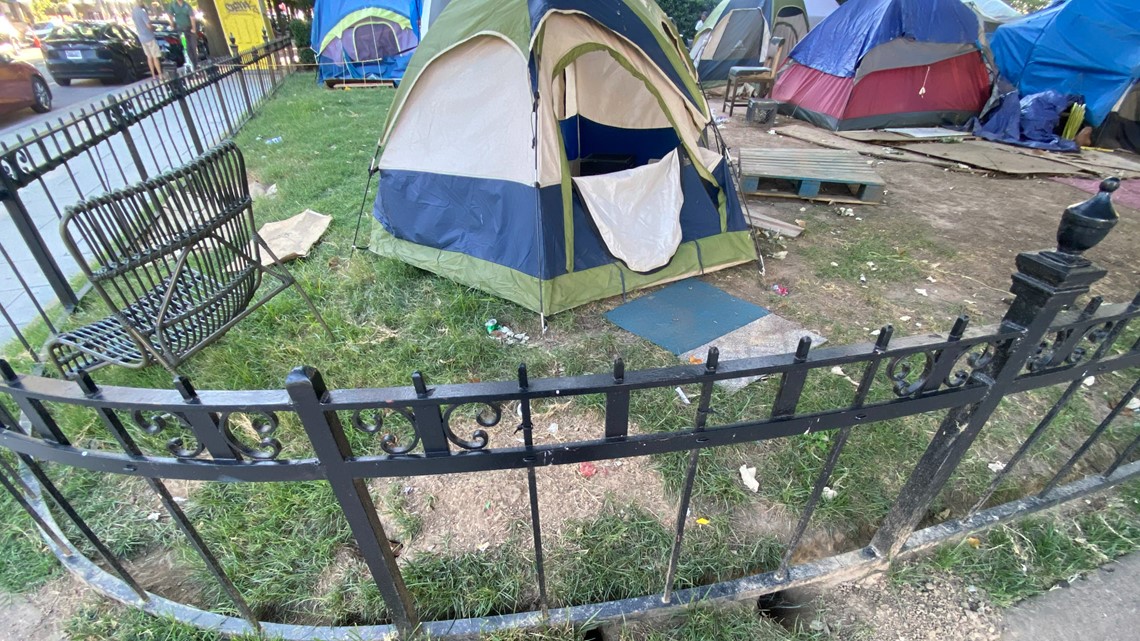
A WUSA9 viewer named Rhys took photos of the encampment days before it was shut down.
“It's just really sad that the city just kind of allows this to happen and isn't doing more to kind of help with the situation,” Rhys said.

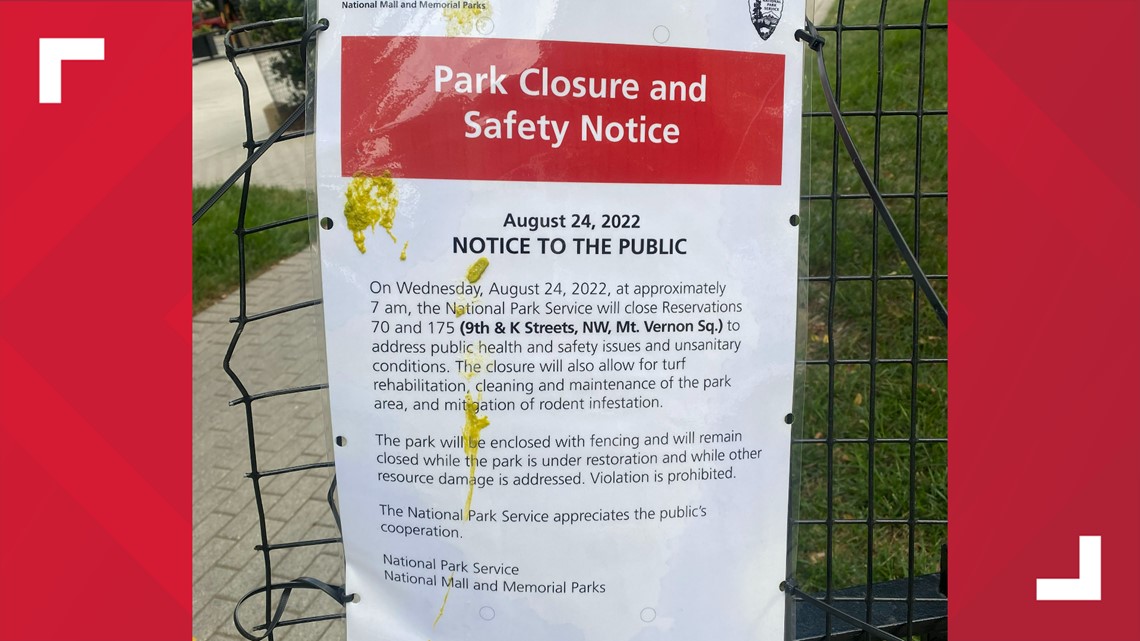
But Turnage said there have also been signs of progress. During a pilot program in 2021, he said the District successfully placed 100 out of 139 unsheltered residents, who wanted housing, in apartments. The city says another nine people are slated for placement in homes later this year. The program also brought down the average amount of time it takes to place an unsheltered person in housing from as much as nine months to about four or five months.
Still, Turnage said even that pilot program has its challenges because locating suitable housing for people experiencing homelessness is not easy to do in a city with an affordable housing shortage.
“We have enough vouchers to pay for every person who is unhoused,” Turnage said. “The question of whether or not we have enough housing supply is a lot more complicated.”

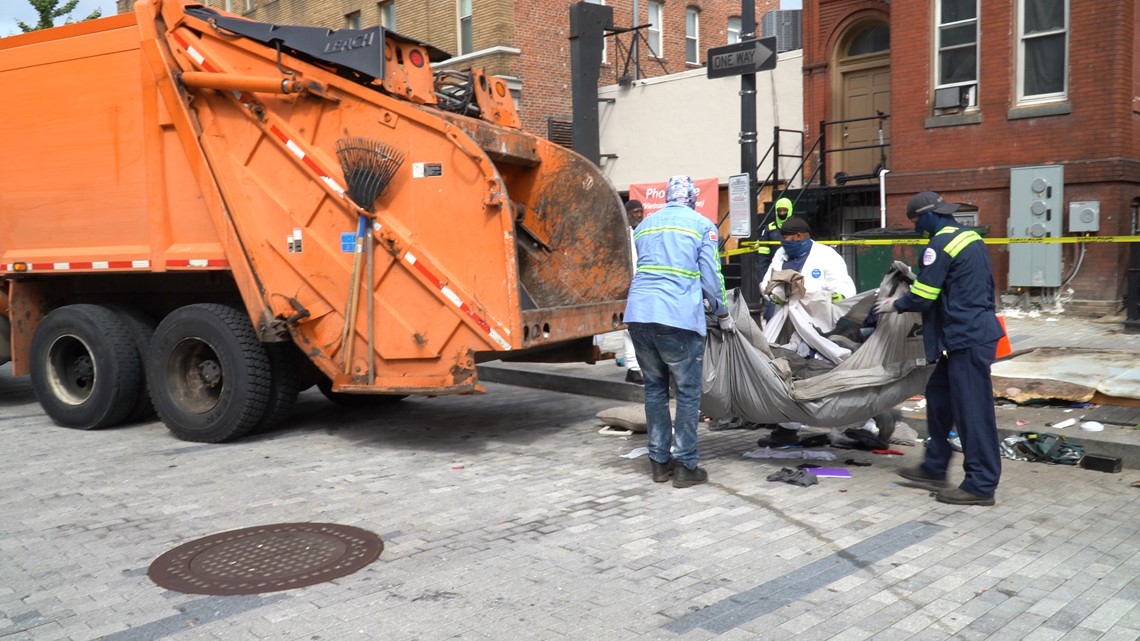
On T Street, Chicas said it’s the city’s response that is complicated.
“Not one department is in charge of everything,” she said. "So we constantly have to reach out to different people. And different people can and cannot make certain decisions. So, they all have to be on the same page for something like this cleanup to happen.”
Turnage said the District has tried to streamline the reporting process for encampments.
“Maybe we need to do a better job of explaining that there is a central point of contact,” he acknowledged.”
In the meantime, the streets of D.C. remain littered with questions in the search for a long-term solution.

